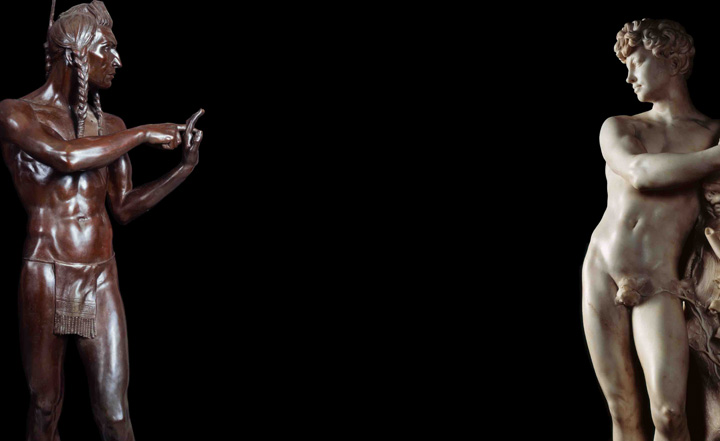
Every composition is made of negative and positive space. In art, the place where there is no object indicates where the object is; in literature, the thing which is "not there" is indelibly present.
In Ken Gonzales-Day's work, the negative is likewise not "nothing," but is the necessary "something" against which other things come most fully into being -- things which are objects and which are the objects of subjects and the subject of objects.
The lynching tree is an object; the body of a lynching victim both subject and object. When Gonzales-Day erases this body from the souvenir postcard that objectified it, he directly shows the "not there" that this person was seen as being then, and the empty conceit that race has always been. When the tree itself is found and photographed many years later, the "not there" of the lynching remains as narrative trace, the place where Nature is revealed as mostly Human Nature.
By turn, the thing that "is," is also "not" in Gonzales-Day's art. A series of photographs of Enlightenment busts, meant to be representative -- of a great man, of a great race -- shows as profoundly present the absence of anything beyond the sheer materiality of the photograph, and of the insensate material it captures: the antique stone and the antiquated notion. A fragmented torso or an amputated sculptured hand is beautiful as broken glass, as Gonzales-Day captures the arch ache of our desire to be perfect and permanent, a desire that, like all desires, involves constant reiteration and the saving grace of patterned patience.
Gonzales-Day has an archivist's impulse to preserve, and a collector's obsession with the never-ending collection. In his photographs, the African is rendered exquisitely in black marble. So is the European. Who is black when the only black is a chunk of stone and the idea of African? What makes an object? Or rather, who? There are puns here that are real problems: who do we race to profile? Where is Out West? On what trees have we swung and how well are we hung? There is great beauty in these images and imagoes, a high and breathtaking formalism that becomes breathlessly epistemological, for the question Gonzales-Day finally poses is terminal: What is a good object?
—Vanessa Place